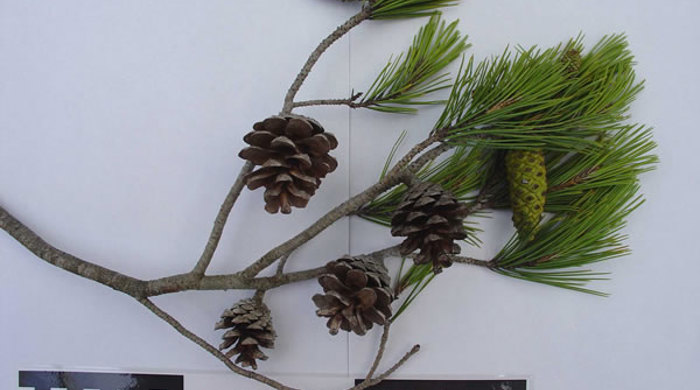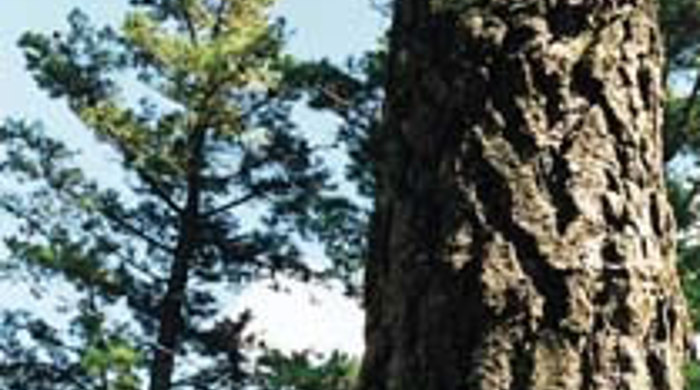Pinus spp.
Pine
Also known as:
Monterey pine, wilding pine, maritime pine, scots pine, ponderosa pine, corsican pine
Family: Pinaceae
Origin: Various
Regional Pest Management Plan (RPMP) status
- Not a legally declared pest
General description
Evergreen resinous trees usually < 45 m tall. Bark is rough and often thick and fissured. Leaves are green, needle-like and produced in clusters. Cones contain many seeds.
What you need to know
Although pines are not legally declared pest plants (except for Pinus contorta), they may still be invasive in some situations. Consider lower-risk alternatives for your garden, such as native plants.
Habitats
Open areas, coastal areas, shrubland, plantations.
Dispersal
Seeds dispersed by wind. Human-mediated dispersal through deliberate plantings.
Impact on environment
Outcompetes and displaces native vegetation. Some are allelopathic and can alter habitats.
Control
Site Management
Follow up treated areas 3 times per year. Encourage natural regeneration of native plants or replant treated areas where possible after 2-3 treatments to establish dense ground cover and minimise reinvasion.
Recommended approaches
Physical control
Method: Dig or pull out seedlings. Cut stump close to the ground below lowest branches. Ringbark below lowest branches making sure the cambium layer is completely cut through if safe to do so.
Plant parts requiring disposal: Cones.
Disposal options: Remove to greenwaste or landfill if practical.
Biocontrol
Biocontrol is currently not available for this species.
Community agrichemical control recommendations
Certified Handler/Experienced agrichemical user: Foliar spray in summer with 100ml glyphosate green per 10L of water and 20ml penetrant.
Drill and inject trees with 750ml glyphosate green and 10ml penetrant per 1L of water if safe to do so. Drill 18mm holes (tangentially angled downwards) in a spiral up the trunk. For 50mm stems drill one hole. For 100mm stems drill two holes. For larger stems drill holes 150mm apart.
Safety notes
Large trees must not be ringbarked or drilled that are closer than 1.5 times the height of the tree from paths, walkways and property.
Trees over 4 metres in height should be removed by a qualified arborist.
Caution: When using any herbicide or pesticide please read the label thoroughly to ensure that all instructions and safety requirements are followed.






